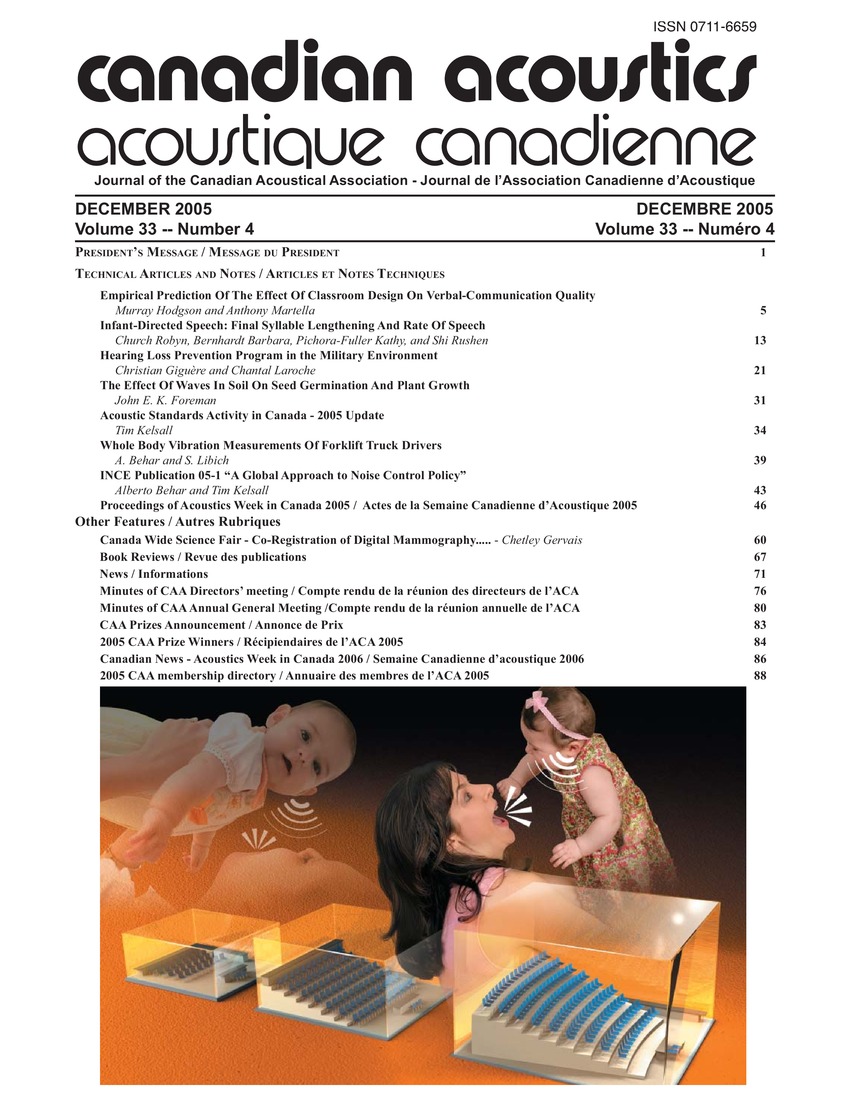Infant-directed speech: Final syllable lengthening and rate of speech
Keywords:
Speech communication, Video recording, Infant-directed speech (IDS)Abstract
The present study compared infant-directed speech (IDS) and adult-directed speech (ADS) for two mothers of preverbal infants. Each mother participated in two recording sessions, one with her child, and one with an adult friend. The primary objective of the study was to determine the influence of exaggerated utterance-final syllable lengthening on the rate of IDS. A secondary objective was to compare the rate of speech read to infants with the rate of spontaneous IDS. The results showed an overall slower rate of speech in IDS to preverbal infants compared with ADS, replicating previous research. However, when the utterance-final syllable was excluded from the calculation of rate, the rate of speech in spontaneous IDS and ADS did not differ significantly. Speech was read to infants at a slower rate than spontaneous IDS. Implications for future research are suggested.Additional Files
Published
How to Cite
Issue
Section
License
Author Licensing Addendum
This Licensing Addendum ("Addendum") is entered into between the undersigned Author(s) and Canadian Acoustics journal published by the Canadian Acoustical Association (hereinafter referred to as the "Publisher"). The Author(s) and the Publisher agree as follows:
-
Retained Rights: The Author(s) retain(s) the following rights:
- The right to reproduce, distribute, and publicly display the Work on the Author's personal website or the website of the Author's institution.
- The right to use the Work in the Author's teaching activities and presentations.
- The right to include the Work in a compilation for the Author's personal use, not for sale.
-
Grant of License: The Author(s) grant(s) to the Publisher a worldwide exclusive license to publish, reproduce, distribute, and display the Work in Canadian Acoustics and any other formats and media deemed appropriate by the Publisher.
-
Attribution: The Publisher agrees to include proper attribution to the Author(s) in all publications and reproductions of the Work.
-
No Conflict: This Addendum is intended to be in harmony with, and not in conflict with, the terms and conditions of the original agreement entered into between the Author(s) and the Publisher.
-
Copyright Clause: Copyright on articles is held by the Author(s). The corresponding Author has the right to grant on behalf of all Authors and does grant on behalf of all Authors, a worldwide exclusive license to the Publisher and its licensees in perpetuity, in all forms, formats, and media (whether known now or created in the future), including but not limited to the rights to publish, reproduce, distribute, display, store, translate, create adaptations, reprints, include within collections, and create summaries, extracts, and/or abstracts of the Contribution.


